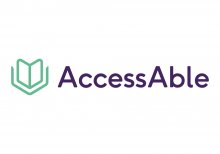Stage 1
If you would like to disclose a disability/long-term health condition then you have the opportunity to do so on the pre-employment health questionnaire which is sent to the Occupational Health team.
Stage 2
When the Occupational Health team receive your pre-employment questionnaire, they may contact you via telephone or face-to-face to discuss your disability/long-term health condition to obtain further information.
Stage 3
The Occupational Health team will complete a Fit Form detailing the specific impairments (if relevant and providing you consent to this) and advise on reasonable adjustments required. Equality Act will be referenced if applicable.
Stage 4
If you need a specific adjustment to your working environment and if you consent, HR will use the Fit Form to inform your line manager.
Stage 5
If your situation requires a more complicated solution, we will refer you and/or your advocate to Access to Work. They can provide additional advice and in some cases help with the cost of an adjustment. We strongly recommend involving Access to Work as early as possible.
Stage 6
The HR team will arrange a workplace assessment with your line manager and with you, and this may include the Health and Safety team. For further information, refer to the workplace health needs assessment information on the GOV.UK website*.
Data confidentiality:
We will ask for your consent to share relevant data before we do so. It will only be shared with colleagues who need to know.
The HR and the People, Culture and Inclusion teams will ensure that the appropriate training is in place so that your line manager can support you in your employment.
Stage 7
You and your manager will meet to discuss the support you will require. They will attach the OH Fit Form to your employee record including any reasonable adjustments undertaken. We will agree an action plan with you and we will also include this in your employee record.
Stage 8
Your line manager will implement the agreed reasonable adjustments (within six weeks of initial request) and regularly review and record:
- Appropriate funding identified
- Date of implementation
Stage 9
Your manager will monitor and review your adjustments and action plan with you at regular one to one meetings to ensure that the appropriate support is in place. Your manager may refer you back to OH if any significant changes in your health are identified to ensure that the appropriate support is in place.
Notes
Occupational health support is available to all employees, at the start of their employment or at any point during. OH advisers will explain support processes and key contacts.
In all cases, actions and adjustments should be recorded on the employee record to ensure that appropriate support put in place is recorded. All sensitive data will be held according to the General Data Protection Regulation (GDPR).
* The workplace health needs assessment checklist prompts HR/manager to consider whether a DSE assessment or Personal Emergency Evacuation Plan (PEEP) is required via Health and Safety or whether there are parking requirements or other support e.g. referral to the Centre for Wellbeing.



